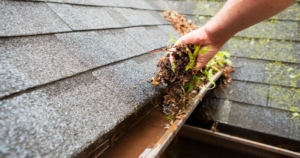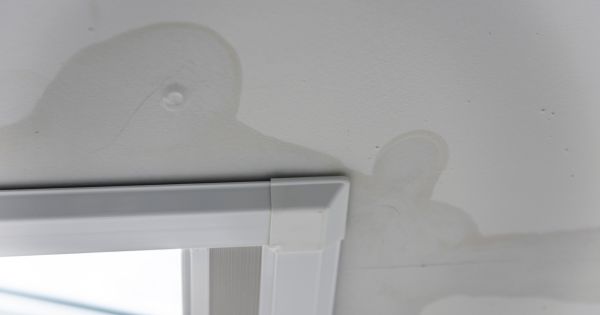How to Prevent Water Damage in Your Home During Rainy Season
Living in Boston, water damage is a common concern, especially during the rainy season. With flooding being a potential threat, it’s essential to take proactive steps to safeguard your home. In this guide, we’ll discuss the risks of water damage during rainy seasons and provide nine simple steps to help you prevent water damage in your home. Plus, if you happen to need a Boston water damage restoration company, we’ve got you covered!
Home Water Damage During Rainy Season
Rainy seasons can wreak havoc on your home, leading to various forms of water damage. From leaky roofs and flooded basements to damaged foundations and mold growth, the consequences can be costly and hazardous to your health. In areas where flooding is a recurring issue, the risks are even higher. However, with proper precautions, you can minimize the risks and protect your home from water damage caused by flooding in Boston or some other factors.
How to Prevent Water Damage in Your Home: 9 Steps

Water damage in your home, especially during the rainy season, can be a major headache. Whether it’s a leaky roof, a burst pipe, or flooding, the consequences can be costly and time-consuming to repair. However, with the right preventative measures in place, you can significantly reduce the risk of water damage and protect your home and belongings. In this section, we’ll explore nine simple yet effective steps you can take to safeguard your home against water damage and keep it dry and secure, even during the wettest of seasons.
Step 1: Keep Your Gutters Clean
Make sure to regularly remove leaves, twigs, and other debris from your gutters. When these things clog up your gutters, rainwater can’t flow away from your house properly. This can lead to water pooling around your foundation, which might cause it to crack or weaken. Take a few moments from time to time to clean out your gutters, especially before the rainy season hits.
Step 2: Maintain Your Roof
Check your roof for any signs of damage, like missing or cracked shingles. These little problems might not seem like a big deal, but they can let rainwater sneak into your home. If you spot any issues, it’s important to fix them right away. You can do this yourself if you’re handy, or you can call in a professional to help out.
Step 3: Seal Windows and Doors
Take a walk around your house and inspect the areas around your windows and doors. If you see any gaps or cracks, seal them up with caulk or weatherstripping. These little openings might seem insignificant, but they can let rainwater seep into your home and cause all sorts of trouble.
Step 4: Grade Your Yard Away from the Foundation
Check out the ground around your house and see if it slopes away from your foundation. If it doesn’t, you might have a problem on your hands. Water can collect around your foundation if the ground slopes towards it, which can lead to basement flooding and other issues. If you notice that the ground slopes the wrong way, you can add some soil to build it up and make it slope away from your house.
Step 5: Step Install a Sump Pump
If you have a basement, installing a sump pump can be a lifesaver. This little gadget sits in a pit in your basement and pumps out any water that starts to accumulate. It’s especially handy during heavy rains or if your basement tends to flood. Make sure to keep it in good working order and consider getting a battery backup in case the power goes out.
Step 6: Waterproof Your Basement
To keep your basement nice and dry, consider applying a waterproofing sealant to the walls and floors. This can help prevent water from seeping in through the walls, which is a common problem in basements. You can also install a drainage system to help redirect any water that does make its way in.
Step 7: Check Your Plumbing
Keep an eye on your plumbing system and watch out for any leaks. Even a small leak can lead to big problems if it’s left unchecked. Look for signs of water damage, like stains or musty smells, and fix any issues you find right away.
Step 8: Monitor Indoor Humidity Levels
High humidity levels can create the perfect environment for mold to grow. To prevent this from happening, keep an eye on the humidity levels in your home and use a dehumidifier if necessary. This is especially important in areas like the basement or bathroom, where moisture tends to build up.
Step 9: Be Prepared for Emergencies
Finally, it’s always a good idea to have a plan in place for dealing with water damage emergencies. Make sure you know how to shut off the water supply to your house in case of a burst pipe, and keep the contact information for a reputable damage restoration contractor handy, just in case you need it. Being prepared can make all the difference when disaster strikes.
By following these nine simple steps, you can significantly reduce the risk of water damage in your home during the rainy season. Remember, prevention is key when it comes to protecting your home and belongings from the devastating effects of water damage. Stay proactive and stay dry, even amidst the rainy weather in Boston.
Reach out to A.W. Puma Restoration & Remodeling if You Have Water Damage in Your Home
If these steps feel challenging for you, or if you’re unsure of whether water damage already exists in your home, don’t hesitate to reach out to the professionals! At A.W. Puma Restoration & Remodeling, we are dedicated to handling all of your water damage issues from clogged sinks, frozen pipes, and overflowing appliances to leaks and flooded areas of your home. Contact our experienced team today to ensure a free quote! We are available by phone at (508) 300-9747, or you can simply fill out the contact form on our website. Our goal is to make each customer experience an excellent one so we create life-long clients!




